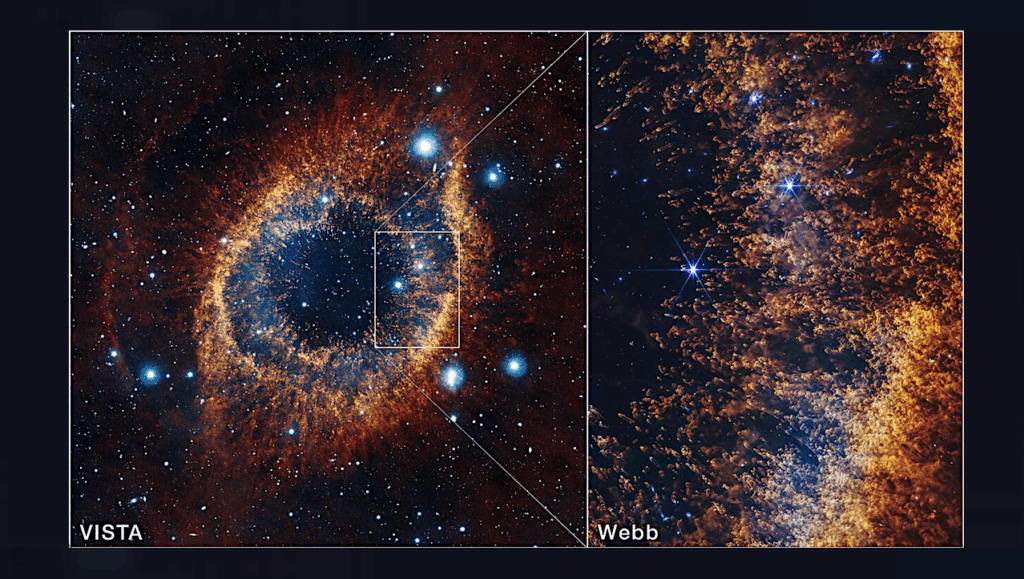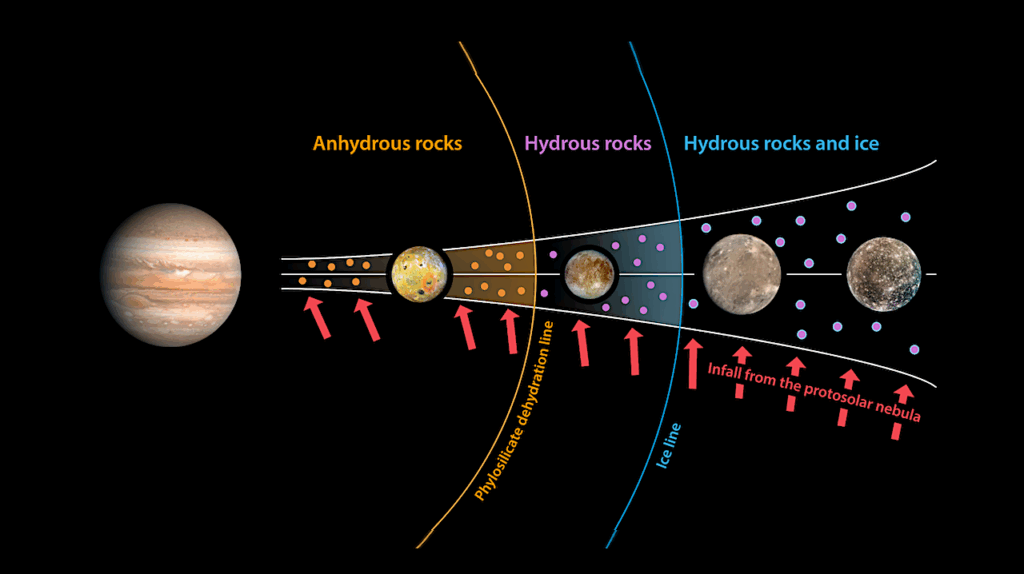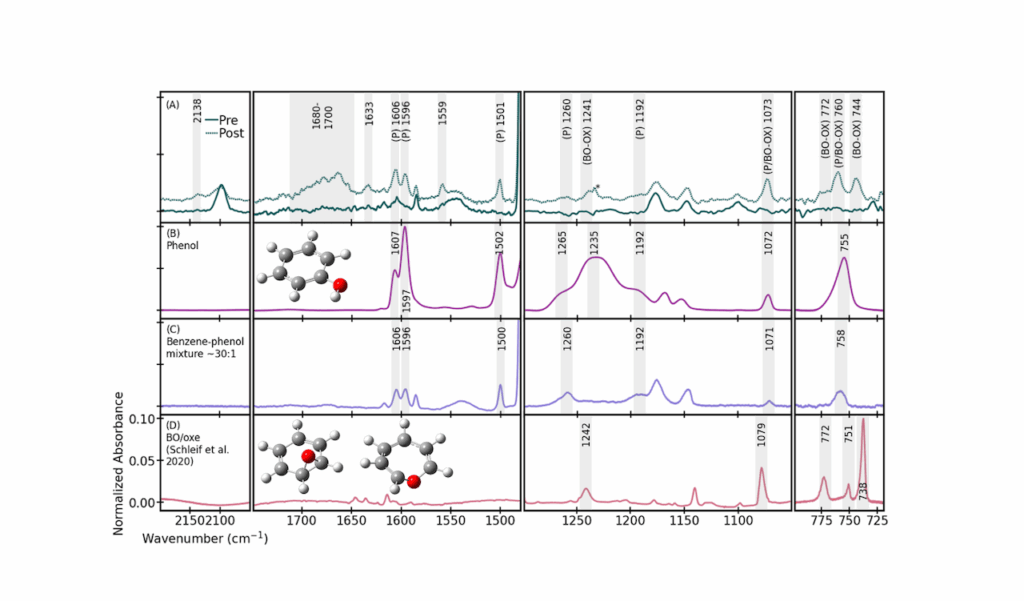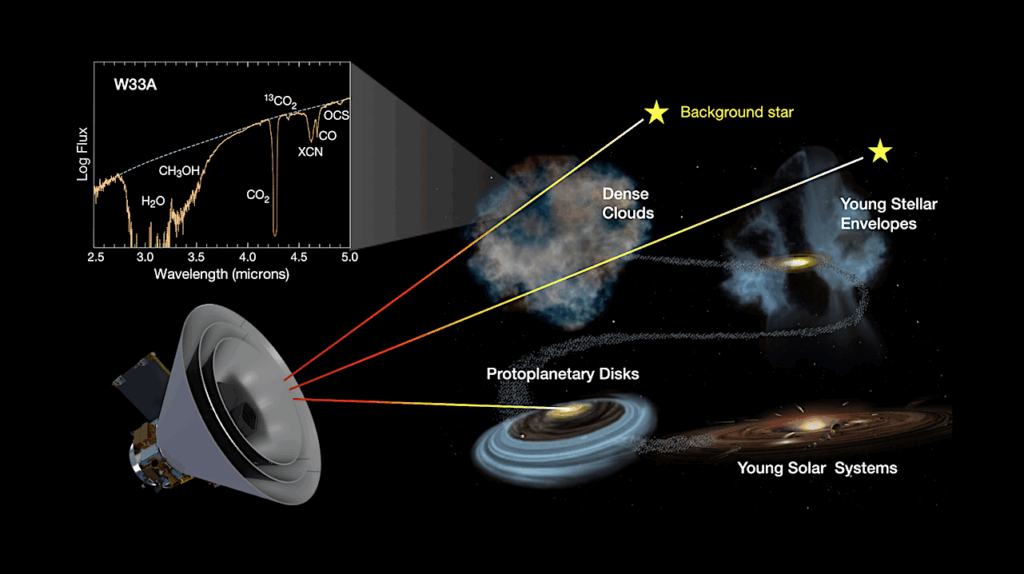Chemistry and Spatial Distribution of Small Hydrocarbons in UV-irradiated Molecular Clouds: the Orion Bar PDR

We study the spatial distribution and chemistry of small hydrocarbons in the Orion Bar PDR.
We used the IRAM-30m telescope to carry out a millimetre line survey towards the Orion Bar edge, complemented with ~2’x2′ maps of the C2H and c-C3H2 emission. We analyse the excitation of the detected hydrocarbons and constrain the physical conditions of the emitting regions with non-LTE radiative transfer models. We compare the inferred column densities with updated gas-phase photochemical models including 13CCH and C13CH isotopomer fractionation. ~40% of the lines in the survey arise from hydrocarbons (C2H, C4H, c-C3H2, c-C3H, C13CH, 13CCH, l-C3H and l-H2C3). We detect new lines from l-C3H+ and improve its rotational spectroscopic constants. Anions or deuterated hydrocarbons are not detected: [C2D]/[C2H]<0.2%, [C2H-]/[C2H]<0.007% and [C4H-]/[C4H]<0.05%. Our gas-phase models can reasonably match the observed column densities of most hydrocarbons (within factors <3). Since the observed spatial distribution of the C2H and c-C3H2 emission is similar but does not follow the PAH emission, we conclude that, in high UV-flux PDRs, photodestruction of PAHs is not a necessary requirement to explain the observed abundances of the smallest hydrocarbons. Instead, gas-phase endothermic reactions (or with barriers) between C+, radicals and H2 enhance the formation of simple hydrocarbons. Observations and models suggest that the [C2H]/[c-C3H2] ratio (~32 at the PDR edge) decreases with the UV field attenuation. The observed low cyclic-to-linear C3H column density ratio (<3) is consistent with a high electron abundance (Xe) PDR environment. In fact, the poorly constrained Xe gradient influences much of the hydrocarbon chemistry in the more UV-shielded gas. We propose that reactions of C2H isotopologues with 13C+ and H atoms can explain the observed [C13CH]/[13CCH]=1.4(0.1) fractionation level. S. Cuadrado, J.R. Goicoechea, P. Pilleri, J. Cernicharo, A. Fuente, C. Joblin (Submitted on 1 Dec 2014) Comments: 30 pages, 23 figures, 15 tables. Accepted for publication in A&A (English not edited, abstract abridged) Subjects: Astrophysics of Galaxies (astro-ph.GA) Cite as: arXiv:1412.0417 [astro-ph.GA] (or arXiv:1412.0417v1 [astro-ph.GA] for this version) Submission history From: Sara Cuadrado [view email] [v1] Mon, 1 Dec 2014 10:47:07 GMT (1724kb,D) http://arxiv.org/abs/1412.0417








